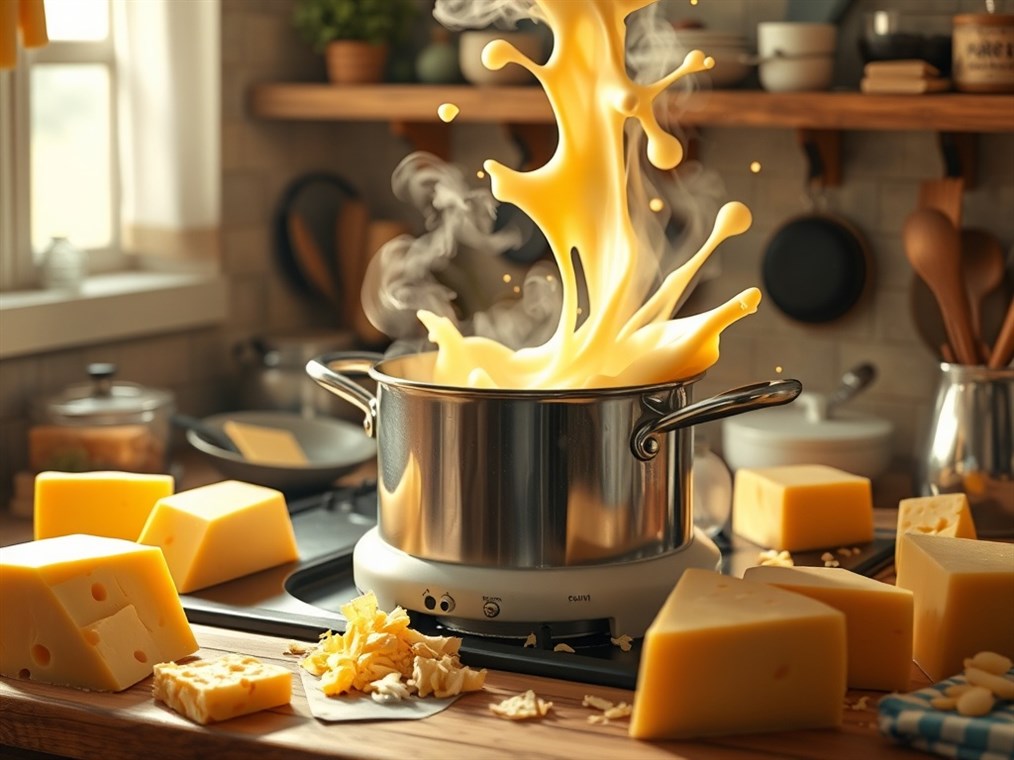Can You Melt Cheese with Milk? Let’s Get Cheesy!
Okay, let’s talk cheese. Specifically, that age-old question: can you actually melt cheese with milk? We’ve all been there, staring into the fridge, dreaming of a gooey masterpiece. The answer? It’s not quite as straightforward as you might think, but trust me, it’s totally doable.
Melting cheese is like a little bit of kitchen magic. Think about it: you’re taking this solid block and transforming it into something gloriously smooth and delicious. The secret lies in understanding what cheese is. Basically, it’s a party of fat, water, and protein (mostly casein), all hanging out together. When you heat it up, those protein bonds loosen their grip, the fat gets all melty, and voilà!
Now, where does milk come in? Well, milk is your secret weapon for preventing a cheesy disaster. It adds moisture, which is key to keeping things smooth and preventing the cheese from turning into a clumpy, greasy mess. But, and this is a big but, you can’t just throw any old cheese into a pot of milk and expect perfection. I learned that the hard way trying to make mac and cheese with feta. Don’t do it.
The type of cheese matters a lot. Think about it: a soft, young mozzarella is going to melt way differently than a hard, aged Parmesan. You want cheeses that are naturally good at melting, like mozzarella, young Gouda, Havarti, or Fontina. These guys have the right balance of moisture and fat to become beautifully smooth when heated. Save the Parmesan for sprinkling on top after melting.
Technique is also key. Low and slow is the name of the game. Warm the milk gently, then add shredded cheese gradually, stirring like your life depends on it. Seriously, constant stirring is essential. Crank up the heat too high, and you’ll end up with a grainy, separated mess. Nobody wants that.
Ever heard of a roux? It’s basically a fancy way of saying “butter and flour cooked together,” and it’s the classic starting point for many cheese sauces. The roux acts like a stabilizer, preventing the sauce from separating. Think of it as the glue that holds everything together. But here’s a little secret: you can totally make a cheese sauce without one!
Want to ditch the roux? No problem! A pinch of cornstarch mixed with the cheese can work wonders. Evaporated milk, with its higher concentration of milk solids, can also create a richer, thicker sauce. And a little cream cheese? Game changer! It adds a velvety smoothness that’s hard to resist.
Even with the best intentions, things can still go wrong. Grainy sauce? A splash of extra milk or cream and gentle stirring can sometimes save the day. Lumpy sauce? Whisk like crazy! Sauce too thin? Add more cheese or a cornstarch slurry. Oily sauce? Sadly, that’s a tough one to fix. Prevention is the best medicine here – use good quality cheese and don’t overheat it.
Speaking of cheese, let’s talk favorites. Mozzarella is the king of stretch, perfect for pizza. Cheddar brings that classic, comforting flavor. Gouda is buttery and rich. Fontina is creamy and savory. Gruyère adds a nutty depth. And Havarti? It’s just plain delicious. Experiment and find your own go-to cheeses!
One last thing: allergies. Milk allergies and lactose intolerance are real concerns. Always be mindful of your audience and adjust your recipes accordingly.
So, can you melt cheese with milk? Absolutely! With the right cheese, the right technique, and a little bit of patience, you can create cheesy masterpieces that will impress your friends and family (and, let’s be honest, yourself). Now go forth and melt!

